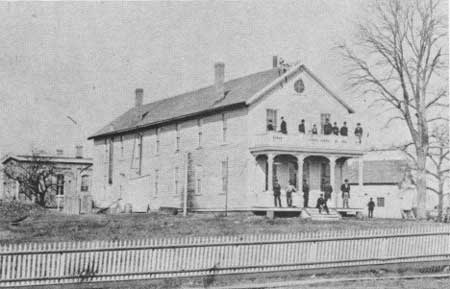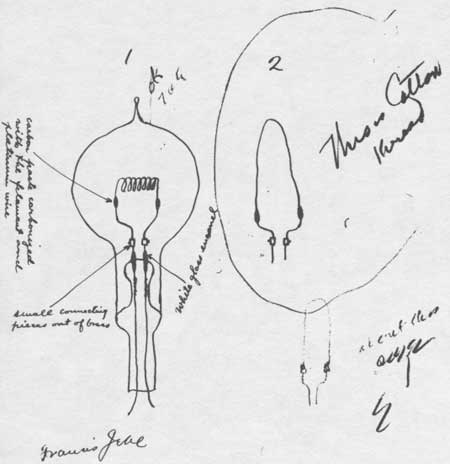|
Beehives of Invention Edison and His Laboratories |
 |
Crucibles of Creativity: The Labs
When Thomas Edison began his career as an inventor, the profession was a solitary one. When he died, inventing had become essentially a team effort. He had launched a concept that eventually led to the modern industrial research lab.
As a young man, Edison dreamed of leaving the dreary world of industrial production for full-time creating in a secluded spot. In Menlo Park he realized his dream. His lab in the quiet New Jersey countryside became a crucible for creativity of unparalleled intensity.
It would be foolhardy to write too bold the label of "team effort" over Menlo Park, for the lab was dependent on his personal drive and flow of innovative ideas. His assistants were not mindless lackeys, but neither were they Edison's peers. He had no peers.
His staff was fluid; many came and went. Some men were unable or unwilling to devote all waking hours to the endless questing. Some men wore out and left, but many were fiercely loyal to Edison and stayed for years.
The atmosphere at Menlo Park was always intimate and often intense and heated. Edison was in complete control. At a glance he could oversee the work of a handful of employees. Each of his muckers, as he often referred to his men, reported to him personally.
Edison and His Assistants More Information |
Some of his staff at the old Newark plant stayed with him; among them were John Ott, Charles Batchelor, and John Kruesi. Ott had been with Edison for years. A young man of 21 when Edison interviewed him in Jersey City, Ott demonstrated his inherent mechanical skill by assembling on the spot a pile of machine parts and won himself a job. Charles Batchelor was an Englishman who had completed a machinery installation job for a textile mill in Newark and went to Edison for work. He was hired for his remarkable skill as a mechanical draftsman. And in John Kruesi, Edison had the master craftsman. This Swiss clockmaker was able to make any instrument suggested to him.
These men began with Edison and learned with him in the strange new world of controlled electrical energy. They worked at times near the extreme limit of human endurance. Edison biographer Matthew Josephson relates the story of the "bugs" in one of Edison's stock printer devices in the early 1870's. Edison received a rush order for $30,000 worth of a newly improved model of the printer. At the last moment the model was found to have some maddening problems. Not wishing to lose this big order, Edison took characteristic action. He gathered together, in the Newark plant, his top assistants, Batchelor, Ott, Kruesi, and Sigmund Bergmann, and told them: "I've locked the door and you'll have to stay here until this job is completed. Well, let's find the bugs." After 60 hours without sleep and with little food, they had the stock printers working smoothly. No one quit. This was part of the Edison method, the sweat he claimed as the basis of genius.
 The main laboratory at Menlo Park was a plain, two-story clapboard building. |
Menlo Park is popularly remembered today for one invention, the incandescent lamp. Because of its ultimate significance to the 20th century and all of its allied mechanisms and devices, this honor is well justified. Edison, of course, did not invent electricity or the electric light, per se. Electric power was man-controlled long before his adult years and electric lights had already seen some urban use before his adventure at Menlo Park. The lights of the period were of the arc type, an illumination produced only by enormous expenditure of power. In an arc lamp, the electricity jumped a gap between two carbon rods and steadily burned up the rods in brilliant incandescence. The arc lamp gave a dazzling light, a light too brilliant to be practical for widespread home use. These devices used extremely heavy amperage, were dangerous, and gave off noxious fumes.
Edison also was not the first to think of developing a glowing filament in an airless glass globe. Other scientists had envisioned an electrically activated substance which would glow without rapidly disintegrating or emitting fumes. Yet no one had made a filament that would not burn out quickly.
 Francis Jehl drew sketches 1 and 2 of early experimental filaments in October 1879. Edison sketched the third one and made these notations: "OK, TAE," "This is Cotton thread," and "about this size, E." |

|

|
|
|
|
Last Modified: Thurs., May 19 2005 10:00:00 am PDT |


